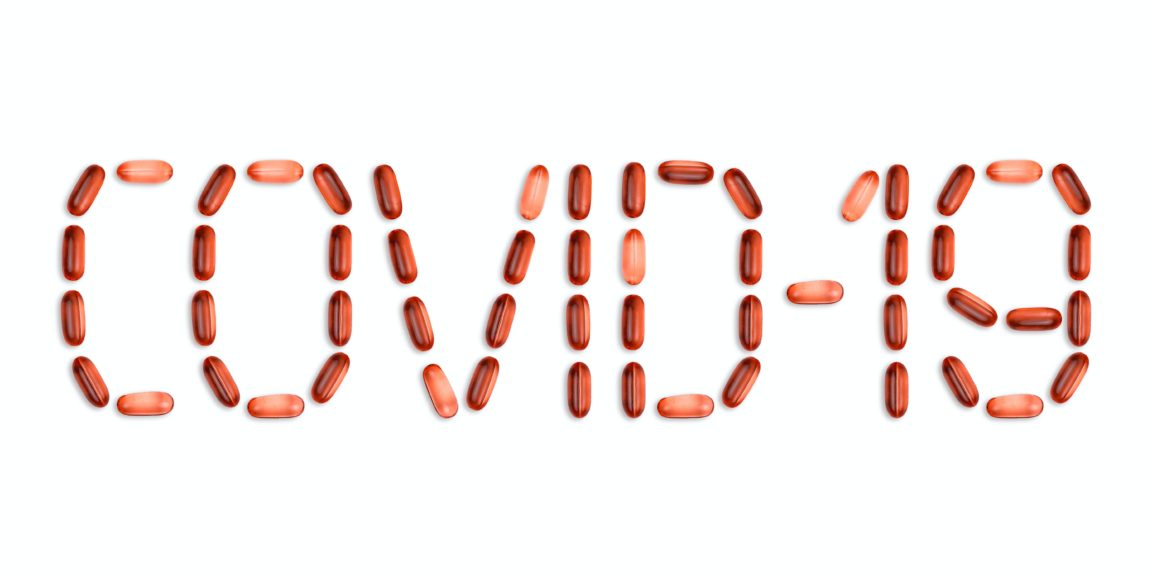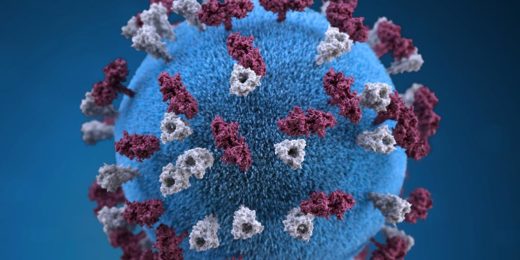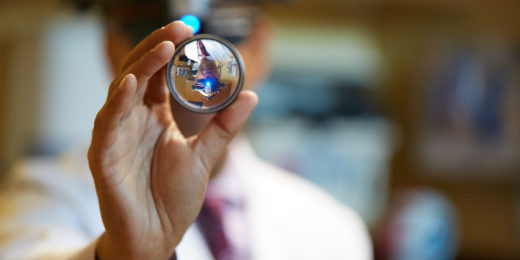A Stanford eye expert and his colleagues have unearthed an idle drug that could possibly be repurposed to stave off SARS-CoV-2, the coronavirus that causes COVID-19. The drug works not by disabling the virus, as typical antiviral drugs do, but by gumming up one of our own proteins.
Viruses frequently mutate, sometimes acquiring resistance to previously effective drugs. But when you target one of your own proteins instead of one of the virus's, no matter how the virus mutates, it still needs that protein. And if that protein is blocked, the virus is out of luck.
The approach is analogous to what the City of London did on nights when it was being blitzed by the German air force during World War II. Unable to knock those planes out of the sky, the city willed itself into darkness by turning out all its lights. That temporary, reversible absence of illumination made it difficult to impossible for the German pilots to find their targets.
SARS-CoV-2 enters our cells through our nasal passageways, lungs and other organs by virtue of its famed spike protein's connection with a molecule called ACE2, on the surface of susceptible cells. But to do that, the spike protein must first be snipped into just the right shape by another cell-surface protein known as TMPRSS2. (TMPRSS2 is a protease, which means it belongs to a family of proteins that are in the business of clipping pieces off of other proteins.)
When Stanford ophthalmologist Vinit Mahajan, MD, PhD, whose lab studies another protease that causes eye disease, learned about TMPRSS2, he started searching for a protease-suppressing drug that could prevent SARS-CoV-2 infection.
Combing through compounds
In a study recently published in the Journal of Clinical Investigation, Mahajan and his team started searching for compounds by assembling a list of hundreds of proteases that shared a critical feature with TMPRSS2. The scientists used a computational tool developed by Mahajan's team to flag proteases whose Pac-Man-like molecular-snipping cavities bore close three-dimensional structural resemblances to TMPRSS2's own cavity.
Then they combed a public online database for molecules that are already known to inhibit one or another of those proteases.
"The idea was that whatever inhibits those proteases might also inhibit this one," Mahajan told me. They found about 90 such compounds -- many of them available for scientists to buy for experimental use. Some had been tested in clinical trials and shown to be safe for use in humans. The investigators used a computer simulation to learn whether any would bind tightly to TMPRSS2.
"We landed on four that had good potential and had been tested in humans for totally unrelated purposes -- you'd never have linked them to COVID-19," Mahajan said. His team acquired the four compounds and developed a test-tube assay to measure these compounds' ability to block TMPRSS2 from priming SARS-CoV-2's infectious activity in human cells.
The Stanford Medicine researchers handed off the top performer, a compound called avoralstat, to University of Iowa collaborators who had access to an ultra-secure experimentation facility and to bioengineered mice whose airways featured cells with human ACE2, which rendered them susceptible to SARS-CoV-2 infection.
Testing the top performer
"Giving these mice avoralstat before infecting them with SARS-CoV-2 significantly reduced how sick they got," Mahajan said. The mice didn't lose weight, which typically occurs after they've been infected by SARS-CoV-2. Levels of the virus in their blood also dropped, in some cases to zero or close to it.
Avoralstat, a drug that once went through extensive clinical trials for hereditary angioedema (a type of recurrent swelling under the skin) but wasn't proved to be very effective for that condition, did prove to have very mild side effects. (That's always comforting to know when you're targeting one of your own proteins, which is probably there for a reason.) It also has the virtue of remaining in the blood for a substantial period after ingestion in pill form. In principle, it could quickly and easily be repurposed.
"The new vaccines are amazingly effective in most people," Mahajan said, "but millions of immunocompromised patients can't produce decent antibodies, even if they've been vaccinated." For these people, a prophylactic drug could be especially helpful. Plus, a lot of vaccines don't travel well. They're often hard to come by in developing countries -- cost is a barrier, distribution is difficult and undependable electricity makes keeping vaccines that must be stored at sub-zero temperatures a sketchy prospect. Mahajan said he hopes to get pharmaceutical investigators to take avoralstat off the shelf and see if it can prevent SARS-CoV-2 infection in people.
Photo by Volodymyr Hryshchenko






